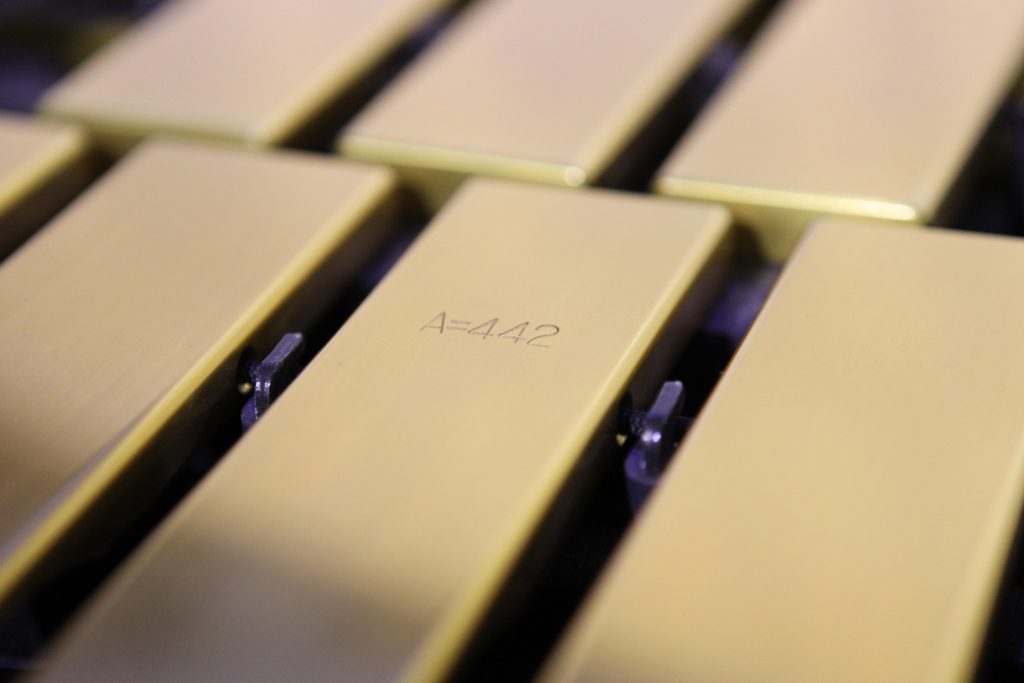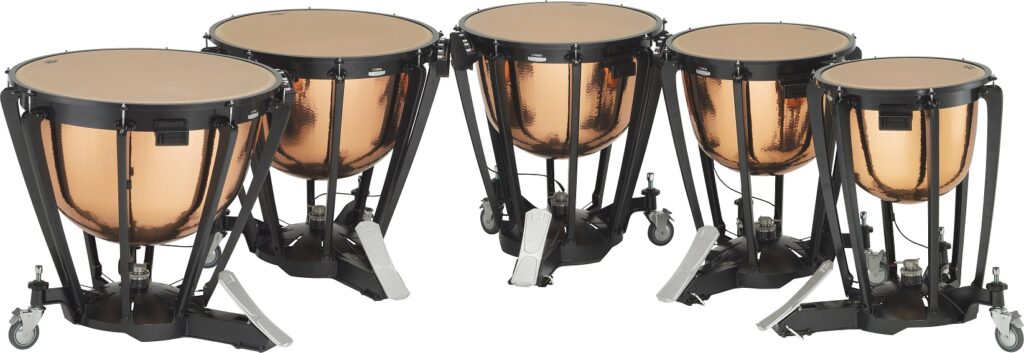Tagged Under:
4 Steps in Caring for Mallet Percussion Instruments
Take proactive steps to protect your marimbas, vibraphones and xylophones.
After a semester of percussion activities, it’s time to assess all your instruments, including marimbas, vibraphones and xylophones, and take proactive steps to protect your equipment.
With performances, rehearsals, and transportation to venues and practice facilities, mallet instruments undergo a lot of stress and strain. The good news is that keeping your mallet instruments in top shape is a matter of following four steps.
The Four Key Steps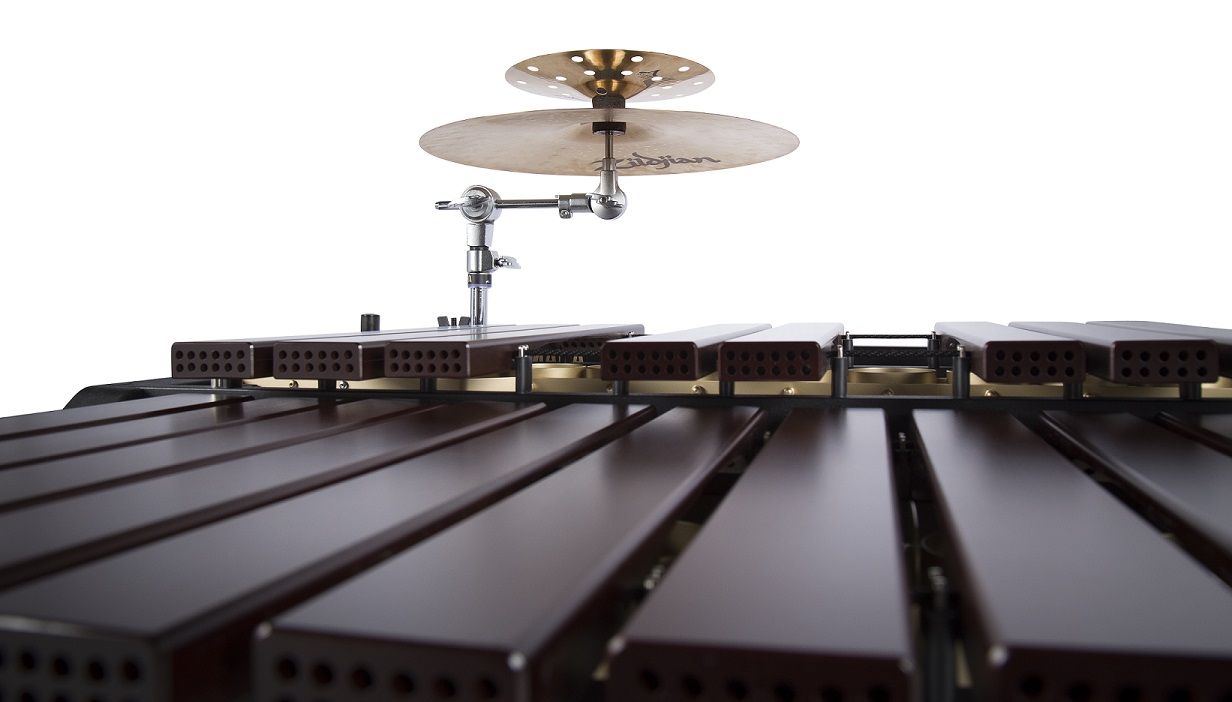
Step 1: Take Inventory — Take a complete inventory of all your mallet instruments at the end of each semester. This eliminates the question of “what do we actually have” and will help cut down on “disappearing” equipment during downtimes. Ensure that every instrument has a proper cover. Take note of every instrument model number, serial number and any pending repair issues.
Step 2: Designate a Contact — Select an individual — it can be a member of the percussion staff or a student leader — to be responsible for all the mallet instruments during the semester. This person will make sure that maintenance checks are done after every performance. The best way to ensure that mallet instruments are well-cared for and ready for the next performance is for ensemble staff members to be diligent about post-event care.
Step 3: Find the Proper Environment— Keep all mallet instruments in a cool, dry environment all year. Extreme changes in temperature can cause extra wear and tear on equipment, so, for example, do not leave mallet percussion instruments in an equipment truck for any length of time. To ensure the integrity of the equipment, keep all instruments in a safe and secure location. Due to extreme weather during the winter, improper storage can cause significant damage to mallet keyboards.
Step 4: Keep it Clean — At the end of every semester, all mallet instruments should be thoroughly cleaned. Take the bars off each instrument. Wipe down the rails and end pieces with a dry, soft cloth, removing any dust in the process.Then place clean covers on all instruments before storing them in a well-ventilated, room-temperature location that is safe from significant changes in temperature and humidity. Remove all mallet bags because they can get overcrowded with extra weight like water bottles, which can damage the rails and resonators.
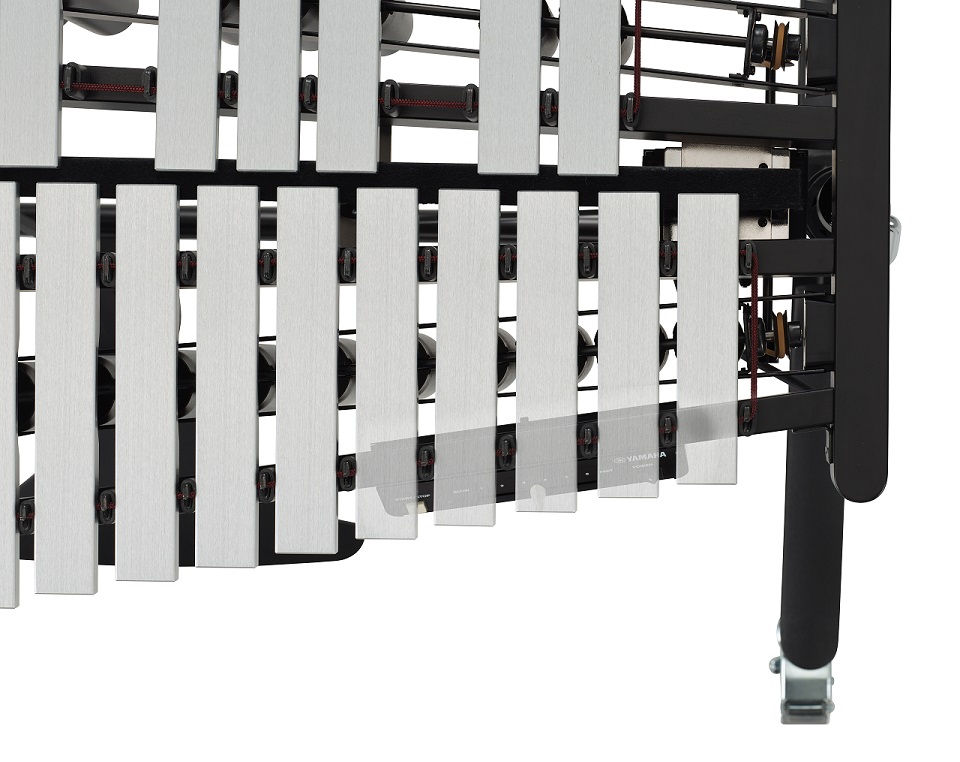 Care Details: Cleaning Tone Bars
Care Details: Cleaning Tone Bars
- The bars of marimbas and xylophones are made of wood, chiefly the highest quality rosewood. Some instruments use wood called padauk. These woods are dried over long periods of time — sometimes as long as three years — to lower the moisture content so that the resulting bars yield lingering reverberations. Because moisture is the archenemy of bars, avoid playing mallet instruments in the rain or in other damp environments.
- The surfaces of marimba and xylophone bars are painted to protect them from humidity. The paint on the bars can be harmed by dust, so carefully wipe the surface with a dry cloth.
- Never use rubbing alcohol (isopropyl alcohol) on marimba or xylophone wood bars because it can be hazardous to the finishes over time. Even in small quantities, such as spatter drops, alcohol can act as a solvent, damaging the wood finish.
- Vibraphone bars are made from a mixture of aluminum alloy and topped with a silver or gold finish. They should be cleaned with light soapy water and thoroughly dried off every week or so. (Any time the instrument is played outside, it should be wiped down.) Do not let vibraphone bars air dry.
Care Details: Never Use Metallic Mallets
- Never use metallic mallets on marimbas, xylophones or vibraphones because they can damage or break the bars.
Care Details: Damaged Bars
- Replace the bar if the pitch is off, the bar is broken, the surface has peeled off or if the bar is otherwise damaged.
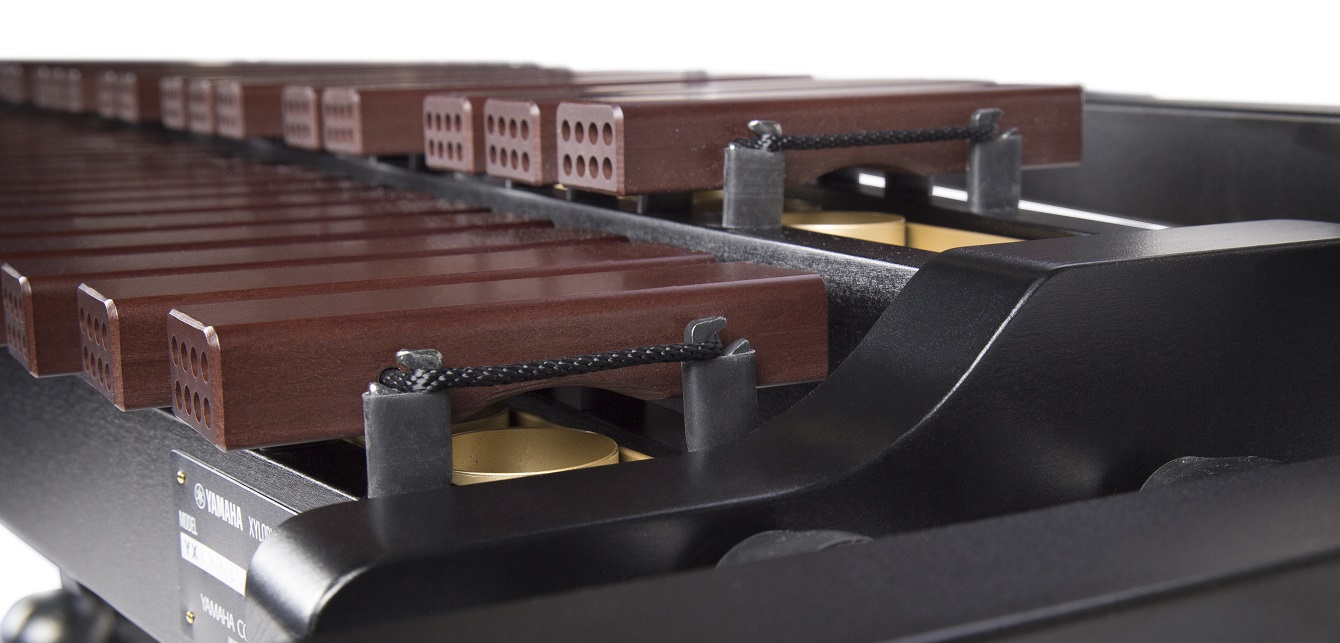 Care Details: Adjusting and Cleaning Resonators
Care Details: Adjusting and Cleaning Resonators
- Metal resonators, or tubes, are affixed beneath the bars. The bars and resonators are tuned so that they project sound the best when the temperature of the room is 23°C, or 73.4°F. If the room’s temperature is higher or lower, the resonators will need to be tuned. Humidity affects the resonators as well.
- If the room’s temperature is higher, the pitches of the bars will be lower, but those of the resonators will be higher. In this situation, lower the pitch of the resonators to create better resonance. The opposite is true for when the room’s temperature is lower — the bars’ pitches are higher, and the resonators’ pitches are lower.
- With instruments with adjustable resonators, move the opening of the pipes closer to the bars to lower the pitch. Conversely, move the resonators farther away from the bars to raise the pitch. Use the resonator receptacle under the lower-note bars to change the size of the gap between the resonators and the bars. When the temperature of the room is high, position the resonators high, or closer to the tone bars; and when the room’s temperature is lower, set the resonators in a lower position, away from the bars.
- When a mallet instrument sounds strange, look inside the resonators because there might be something like a pencil, an eraser, grass or dirt stuck inside. Each resonator tube’s length is based on its corresponding tone bar; if something is trapped inside, it effectively shortens the space inside and changes the sound. Sound is also affected if dust has accumulated inside the resonators. A few times each semester, flip over the pipes and clean them using a can of compressed air to remove dust or any particles that may have fallen inside.
Care Details: Bar Suspension Cords
- The bars of a marimba, vibraphone and xylophone are suspended from cords, and the tension of these cords may need to be adjusted. If the cords are too taut, the bars will rebound too much when struck. If the cords are too loose, they will absorb the vibrations and sound will not project well from the instrument.
- To adjust the tension of the suspension cord, use the springs and cord-tighteners, which are found on the bass side, to alter the cord’s length and the location of the knots.
- The amount of tension is acceptable if there is an adequate amount of elasticity when the cord is pushed down with a finger while connected to the springs.
- If a cord is starting to fray, replace it as soon as possible.
Care Details: Watch for Bent Bar-Posts
- The metal fixtures that anchor the suspension cords are called bar-posts. These fixtures can bend after repeated transporting of the instrument. Bent bar-posts will interfere with the vibrations of the bars, so always check the bar-posts before playing.
Storage
When storing a mallet instrument for long periods of time, take the bars off and carefully pack them in a bar bag. Store the bag in the director’s office or drum room to ensure that the bars are not mishandled during storage. Make sure to avoid extreme temperature changes and high humidity to keep the bars looking and sounding fresh.
Finally, never place anything on top of a mallet instrument while it is stored. Mallet keyboards are not table tops. As attractive as they might be, placing something as delicate as a large winter coat will degrade the bars over time and place unnecessary weight on the rails.
This article was adapted from the Yamaha Musical Instrument Guide.











